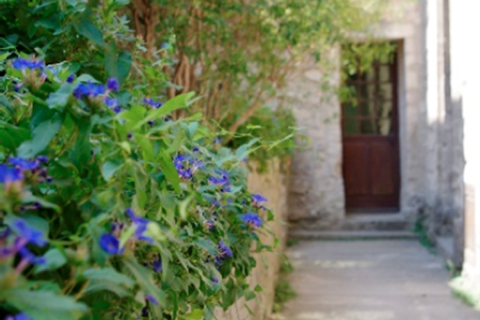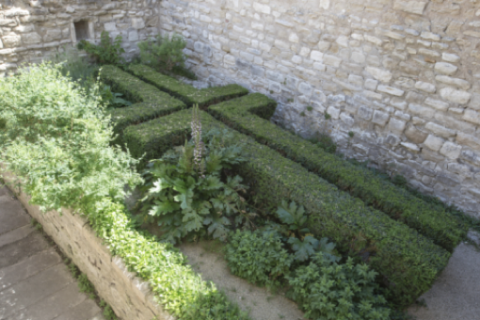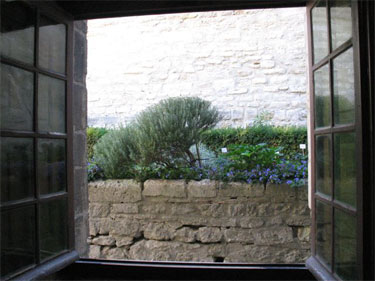... This small, “private” garden was turned into a garden of “simples”, or herbs used to make medicinal remedies. Monks have always grown plants for therapeutic use, both for themselves and for all the poor persons they took in and cared for. Gradually, this type of herbal medicine spread outside of the monastery and was learned by lay persons. The Carthusian order however has always benefited from privilege which entitles them to continue their activities of apothecaries and doctors.
Each Carthusian monk had his own small garden adjoining his hermit cell. There he was free to plant what he wanted to, whether medicinal plants, a few vegetables, or flowers to place on the altar...
Malvia: For bee stings, use an unguent of the juice of the malvia flower mixed with olive oil.
Plantain: Plants in the Plantago genus were used for snake bite, by eating the leaves or drinking the juice.
Mint: If you catch a cold, place a bag filled with mint on your head.
In 2014, the pear trees Royale d’hiver, Frangipane, Louise Bonne, Poire de Beurré, De livre, Catillac and the apple tree Pomme de Châtaignier, seven of the thirteen heritage apple and pear trees which descended from the magnificent collections of fruit trees originally established by the Carthusian monks, were planted in these gardens.






